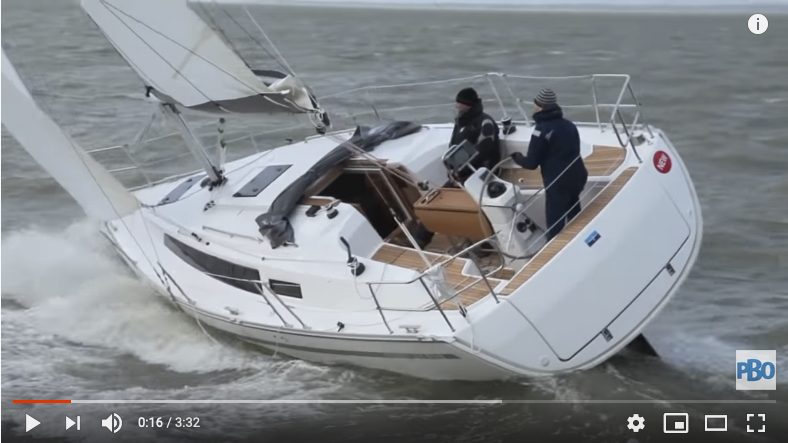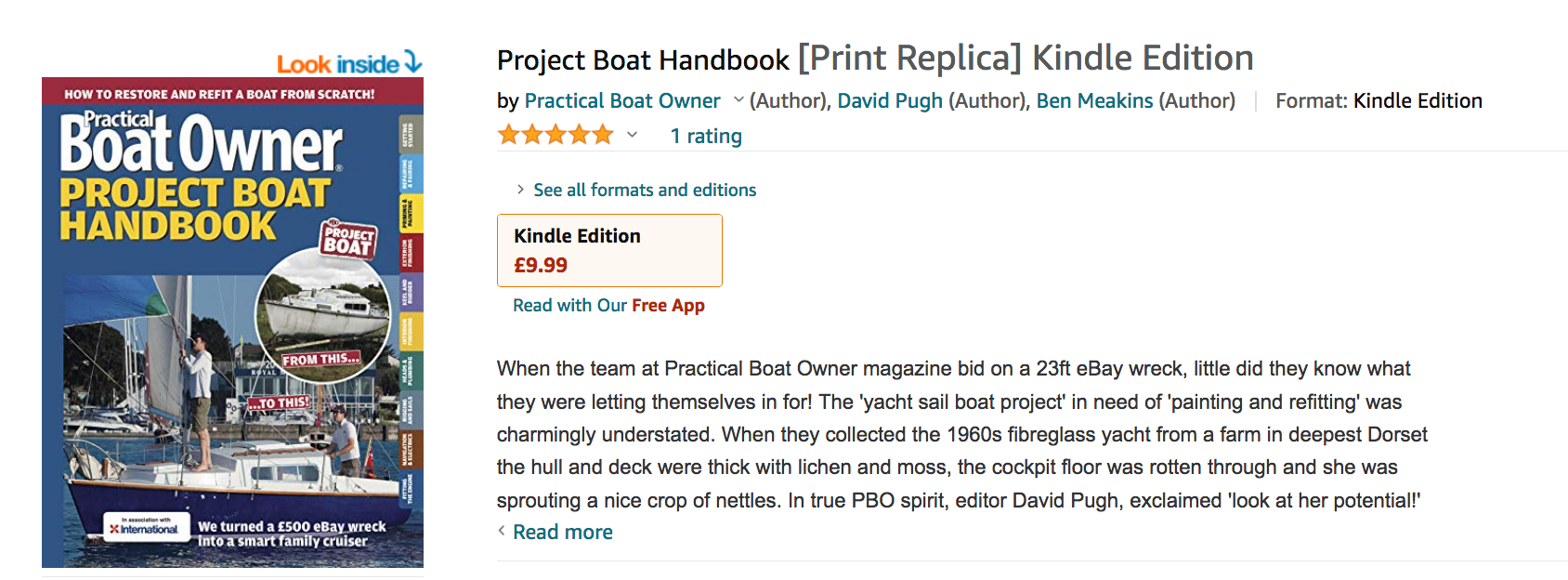Yachts and motorboats on test by the PBO editorial team including Hunter, Dehler, Elan, Rustler, Dufour, Bavaria and more...
Thinking of changing your boat for the 2021 season? Don’t visit your broker without first checking out PBO’s YouTube playlist of boat test footage. Although compiled some years ago, the 23 videos encompass many designs that continue to be popular on the secondhand market.
All the boats have been tested in Practical Boat Owner over the years – including three motorboats, a Hobie trimaran and PBO’s famous Hantu Biru, a 23ft Snapdragon rescued from a farm in Dorset.
Well-known brands include Hunter, Dehler, Elan, Rustler, Dufour and Bavaria, and we’ll be revisiting some of these in the coming issues of PBO to find out how they’ve fared over the years, starting with the Hunter Ranger 245 (which later became the Channel 245) in the February 2021 issue. As David Harding comments, ‘A robust and chunky little cruiser that punched above her weight in lots of ways.’
Click here to find your nearest shop selling PBO on the newsstand · Buy a single issue delivered to your door! OR Buy a single issue to download now · Buy a back issue · Subscribe to get future issues delivered to your door: www.magazinesdirect.com
Hunter Channel 245
PBO verdict by David harding: This is a remarkable little boat, striking a very clever compromise between performance and accommodation. She’s easy and enjoyable to sail, by no means slow for a generously-proportioned cruiser, ridiculously roomy down below and, by all accounts, solidly bolted together. Add the flexibility offered by the builder, plus her established seakeeping qualities, and she stands out a mile from most of the alternatives in this size range. If you were thinking of a bigger boat but are tempted by the lower running costs of something like this, the Hunter Channel 245 might be just what you’re looking for.
LOA 7.01m (23ft 0in)
LWL 6.40m (21ft 0in)
Beam 2.67m (8ft 9in)
Draught – fin 1.37m (4ft 6in); – twin 0.94m (3ft 1in)
Displacement 2,248kg (4,950lb)
Ballast (fin) 1,550kg (3,417lb)
Sail area 25.55sq m (275sq ft)
Displacement/length ratio 15.12
Sail area/displacement ratio 238
RCD category B
Engine Beta 14hp diesel (outboard alternative)
Headroom 1.83m (6ft 0in)
Builder British Hunter, Southampton
PRICE (2012) from £19,950 (bare mouldings)
Sailaway version (2012) £37,144
Complete boat inc. inboard engine (2012) £54,428
The GZ curve for the twin-keeler shows the maximum righting moment at 60° and an angle of vanishing stability (AVS) of 139°
Hobie Tandem Island trimaran
Check out the smiles on the faces of former PBO editor Sarah Norbury, plus staffers Roz, Ben and Julian as they escape the office for a day out in Poole Harbour on the Hobie Tandem Island.
Is it: a) a sailboat? b) a kayak? c) a pedalo? or d) all of the above? The PBO team test the Hobie Tandem Island, a tiny transformer that costs less than £5,000
PBO verdict, by Andrew Brook: Customers can be grouped into three main categories: Families with one or two young children can use the Tandem Island to poke around in estuaries, or even venture out into the open sea; Couples use the boat as something they can do together: one Tandem Island owner has just returned from an eight-week tour of the South of France with his girlfriend. They took the boat with them, revelling in its versatility. One day it was a kayak, launched on a river, the next a sailing trimaran on the sea; The third type of buyer is represented by an experienced sea kayaker who bought a Tandem Island as a bridge to sailing. He sails it around Anglesey, usually alone but with the option of taking a crew.
Versatility is the main strength of the Tandem Island. Its function can change from day to day, but whatever option you choose, you are guaranteed fun in abundance.
PRICE: £4,895
www.hobiecatcentre.co.uk @ Rockley Beach, Near Rockley Watersports Centre, Poole, Dorset BH15 4LZ
Tel: 01202 671661
Bavaria Cruiser 33
Here’s the most popular video, the Bavaria 33, as tested in the May 2013 issue of Practical Boat Owner. Just check-out the spray on that lens!
Comparison: Bavaria 33 (2005-08) vs Bavaria Cruiser 33 (2012 onwards)
Words by David harding: To see how the designs have really developed over the past decade, we need to compare the 33 with an earlier-generation model – so let’s pick the previous 33, built between 2005 and 2008.
Interestingly, looking at the basic numbers shows less difference than you might expect. The old 33’s hull is 0.5m (1ft 8in) longer overall but only 15cm (6in) longer on the waterline because of the greater overhangs.
More similar are the beam – 3.48m (11ft 5in) on the old and 3.56m (11ft 8in) on the new – and the displacement, respectively 5,390kg (11,882lb) and 5,200kg (11,464lb).

Bavaria Cruiser 33 2005 vs 2012: LEFT – Old Bavaria 33: Relatively shorter mast, smaller foretriangle and smaller mainsail vs RIGHT – New Bavaria 33: Relatively taller mast, larger foretriangle and larger mainsail, longer boom with sheet from end and higher aspect ratio keel.
This makes the new 33 slightly heavier and beamier for her length – not features you would necessarily associate with the better performance that Bavaria have been aiming for with the new designs.
Draught figures are almost identical: the shallow-fin versions of both draw 1.5m (5ft) give or take an inch, and the deep fins 1.95m (6ft 5in).
The question, then, is where are the performance-enhancing differences on the new 33? Principally they’re in the keel and the area we’ll look at first – the rig.
It might seem surprising that the normally-quoted sail area for the old 33 – 64sq m (689sq ft) – is greater than that of the new arrival, which carries 51sq m (549sq ft). This is because the ‘main and genoa’ figure on the old model includes the large overlapping headsail – a necessity when the mast, which is shorter in relation to the boat’s length, is so far forward and the mainsail relatively small.
The mast was thus positioned partly so the mainsheet could be taken to a point forward of the companionway. That limited the boom’s length, whereas the boom on the new 33 extends further aft: think of the relative purchases of mainsheets from the middle and the end of the boom.
With a skinny foretriangle and a relatively small mainsail on a shorter rig, the old 33 needed to get its sail area from somewhere; hence the larger headsail. The part of a headsail that overlaps the mainsail works less efficiently than the non-overlapping part, so there’s a greater power-to-area ratio with a smaller overlap and a bigger mainsail.
As for the foils (keel and rudder), both are of higher aspect ratio on the new 33, generating more lift in relation to the drag.
Numbers in the specification can give you a lot of useful information for making comparisons, but you need to look beyond them to get a fuller picture.
Bavaria CRUISER 33 specifications
Price from £78,500
LOA: 9.75m (32ft 0in)
LWL: 8.85m (29ft 0in)
Beam: 3.42m (11ft 3in)
Draught (standard fin): 1.95m (6ft 5in); (shallow fin): 1.50m (5ft 0in)
Displacement: 5,200kg (11,464lb)
Ballast: 1,650kg (3,637lb)
Sail area: 51sq m (549sq ft)
Displacement/length ratio: 213
Sail area/displacement ratio: 17.28
RCD category: A
Engine: Volvo 18hp diesel
Headroom: 1.85m (6ft 1in)
Designer: Bruce Farr
Contact: Clipper Marine. Tel: 02380 605060 · www.clippermarine.co.uk
The GZ curve shows the maximum righting moment at 54° and an angle of vanishing stability (AVS) of 126°
Snapdragon 23
Watch PBO’s project boat Hantu Biru transported from her trailer to Poole Harbour, where she’s lowered into the water in front of her nervous custodians, David Pugh and Ben Meakins.
The transformation from wreck to smart family cruiser took three years. You can read all about it the Project Boat Handbook. You can also watch some of the restoration videos on this playlist.
Yamarin 68C
PBO’s Jake Kavanagh, motorboat enthusiast and cartoonist, puts the trailerable Yamarin 68C through her paces: “A Finnish-built boat that’s actually very nicely fitted out and powered by a 160hp Yamaha engine”.
Need some buying and selling tips?
Paul Singer of British Marine South West shares top tips about buying and selling boats, while his colleague Jo from Bartons Solicitors offers advice about some of the legal pitfalls.
For the full playlist: YouTube playlist.






